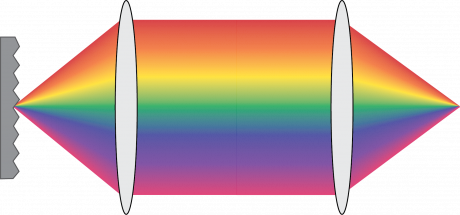Light Propagation in a Temporal Focusing Microscope using Matlab

Project Information
matlab, parallelization, vectorizationProject Status: Complete
Project Region: Northeast
Submitted By: Northeast Cyberteam
Project Email: mdurst@middlebury.edu
Project Institution: Middlebury College
Anchor Institution: NE-University of Vermont
Project Address: 276 Bicentennial Way
McCardell Bicentennial Hall
Middlebury, Vermont. 05753
Students: Anthony Turcios
Project Description
Understanding the propagation of light is essential for developing new techniques for biomedical optics. Characterizing the resolution of a microscope requires calculating how light travels through optical elements such as lenses, apertures, and diffraction gratings. This project uses Fourier optics to analyze the propagation of light through a temporal focusing microscope, in which laser pulses pass through a diffraction grating, a collimating lens, and an objective lens on their way to the sample. Because each wavelength can be treated independently, a cluster will perform parallel numerical calculations to reconstruct the light field at the focus of the microscope, allowing for a more complete understanding of how different laser parameters affect the resolution of a temporal focusing microscope.
Project Information
matlab, parallelization, vectorizationProject Status: Complete
Project Region: Northeast
Submitted By: Northeast Cyberteam
Project Email: mdurst@middlebury.edu
Project Institution: Middlebury College
Anchor Institution: NE-University of Vermont
Project Address: 276 Bicentennial Way
McCardell Bicentennial Hall
Middlebury, Vermont. 05753
Students: Anthony Turcios